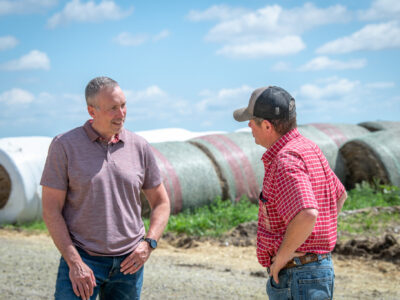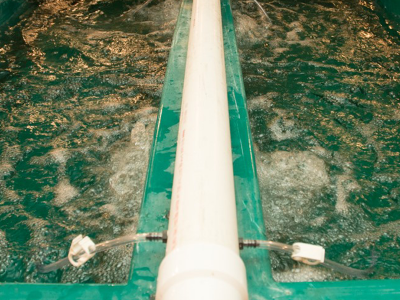Silage Piles and Other Feedstuffs: What You Need to Know
09-25-2023 in Rules & Regulations
Fall is a busy time in Iowa, from harvesting crops, to putting up feedstuffs for the coming year, to baling stalks for bedding. Before chopping silage or other feedstuffs that will be stockpiled, consider potential environmental impacts.
Silage leachate, or seepage from silage piles, bags, bunkers, and silos, is not only an economic loss that negatively impacts your bottom line, but also an environmental concern.
When silage leachate reaches surface water, it has the potential to remove enough oxygen to cause a fish kill. Additionally, the nitrate-nitrogen in silage leachate can also be harmful to groundwater.
The key is to minimize leachate production. A few tips include:
- Harvest below the maximum recommended forage moisture content (generally speaking, 60-70% moisture).
- Cover the forage pile and channel rainwater and snowmelt off of it.
- Keep the loading area clean of spilled feed.
- Keep open bunker silo faces vertical.
- Divert rainwater away from silage storage whenever possible.
For more information on controlling leachate from feedstuffs, read this Michigan State University Extension publication: Environmental Stewardship: Controlling Silage Leachage (E3099) – MSU Extension and call the Coalition to Support Iowa’s Farmers (CSIF) at 800-932-2436.
Recommended News

Are you ready for a DNR inspection?
If it’s been 20 years, it could be time for review Are you ready for a DNR inspection? CSIF Executive Director Brian Waddingham says inspections are on the rise, and...
Read More
New Rules, Same Values
Iowa Governor Reynolds’ Executive Order 10 revamped the state’s livestock production rules in an attempt to streamline regulation. It standardized language, added an online interactive flood plain map, and eliminated...
Read More
CSIF Event Showcases Iowa’s Emerging Aquaculture Industry
The 2022 Aquaculture Conference, hosted by the Coalition to Support Iowa’s Farmers (CSIF), recently drew more than 100 attendees to learn more about Iowa’s newest livestock industry.
Read More